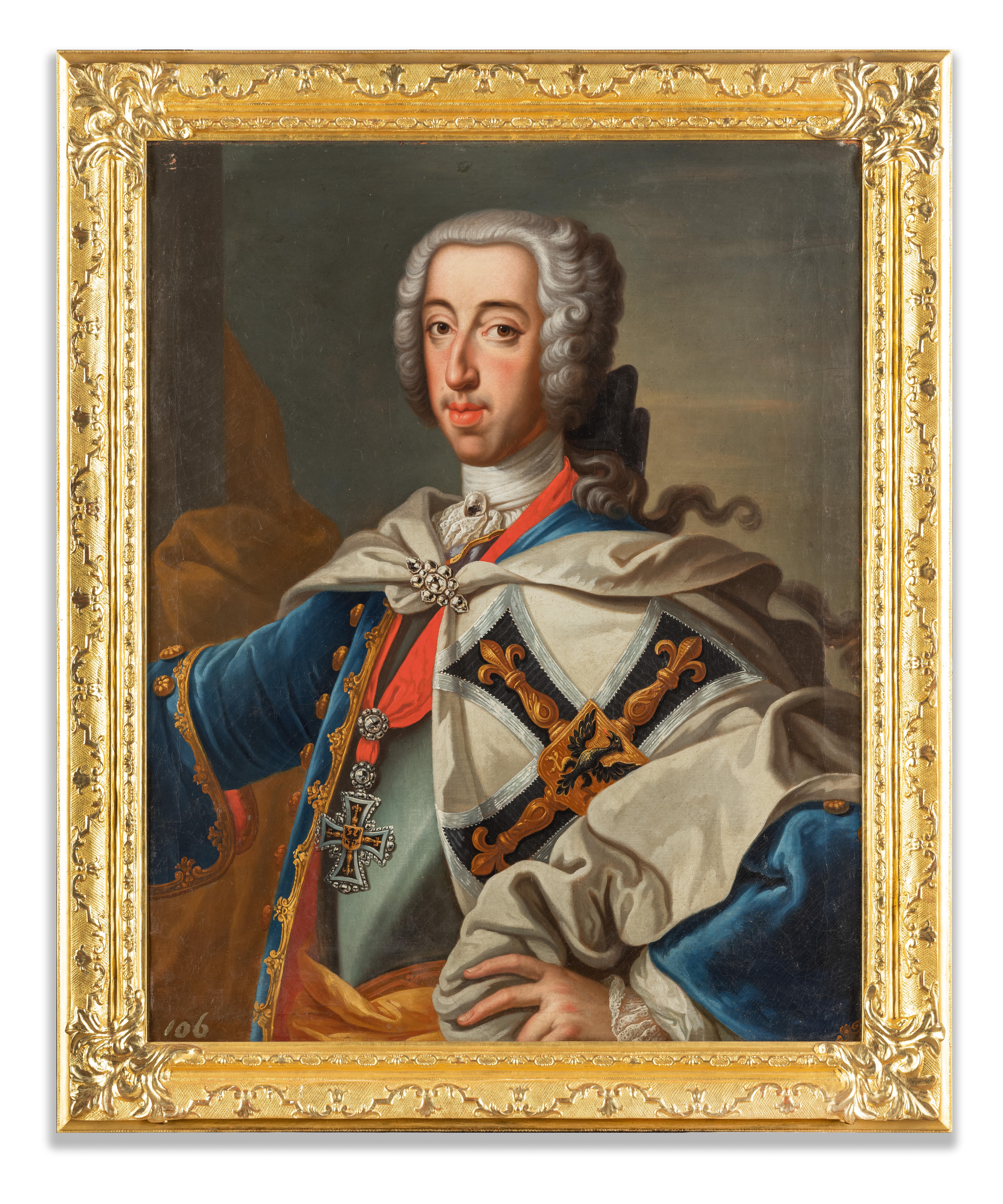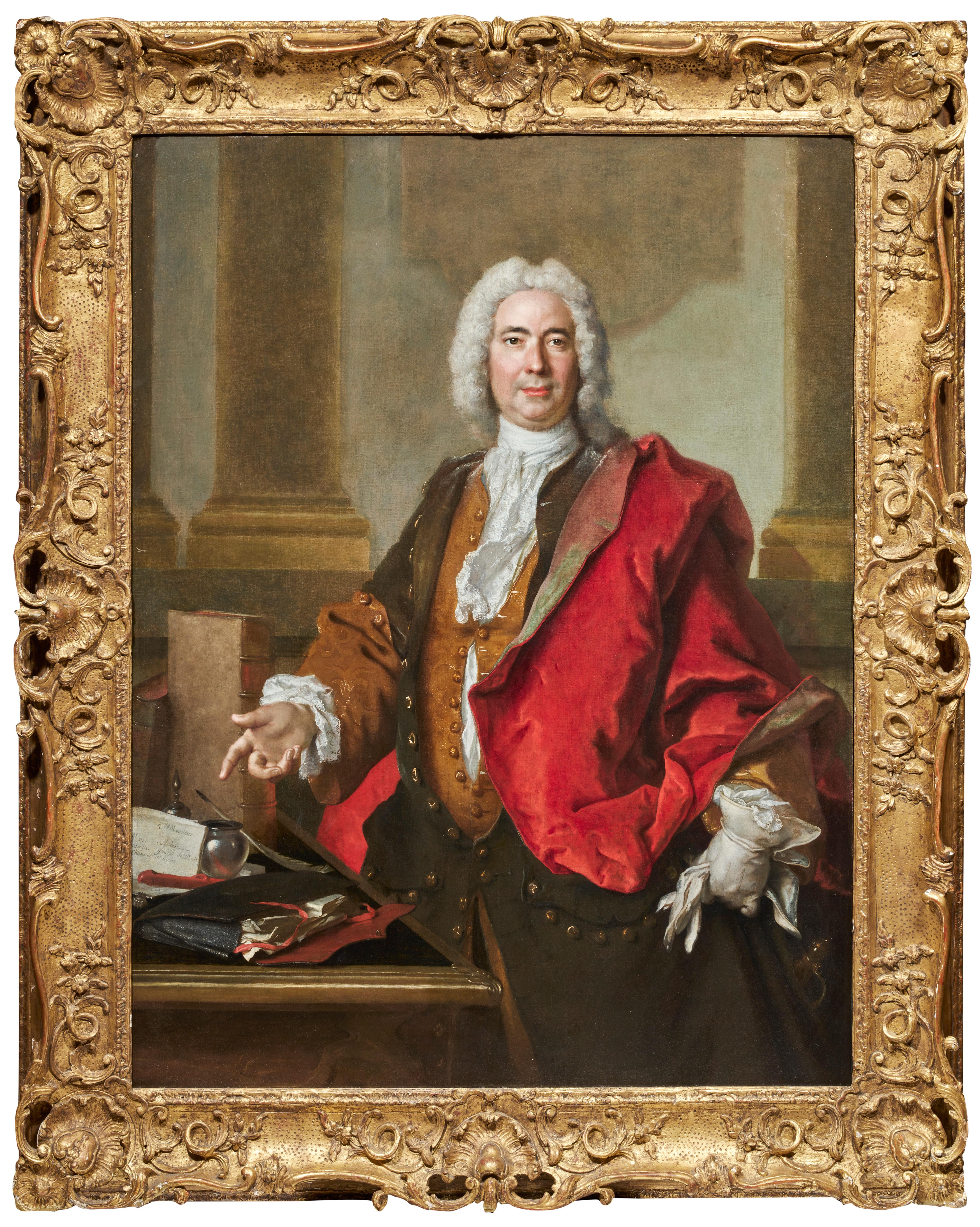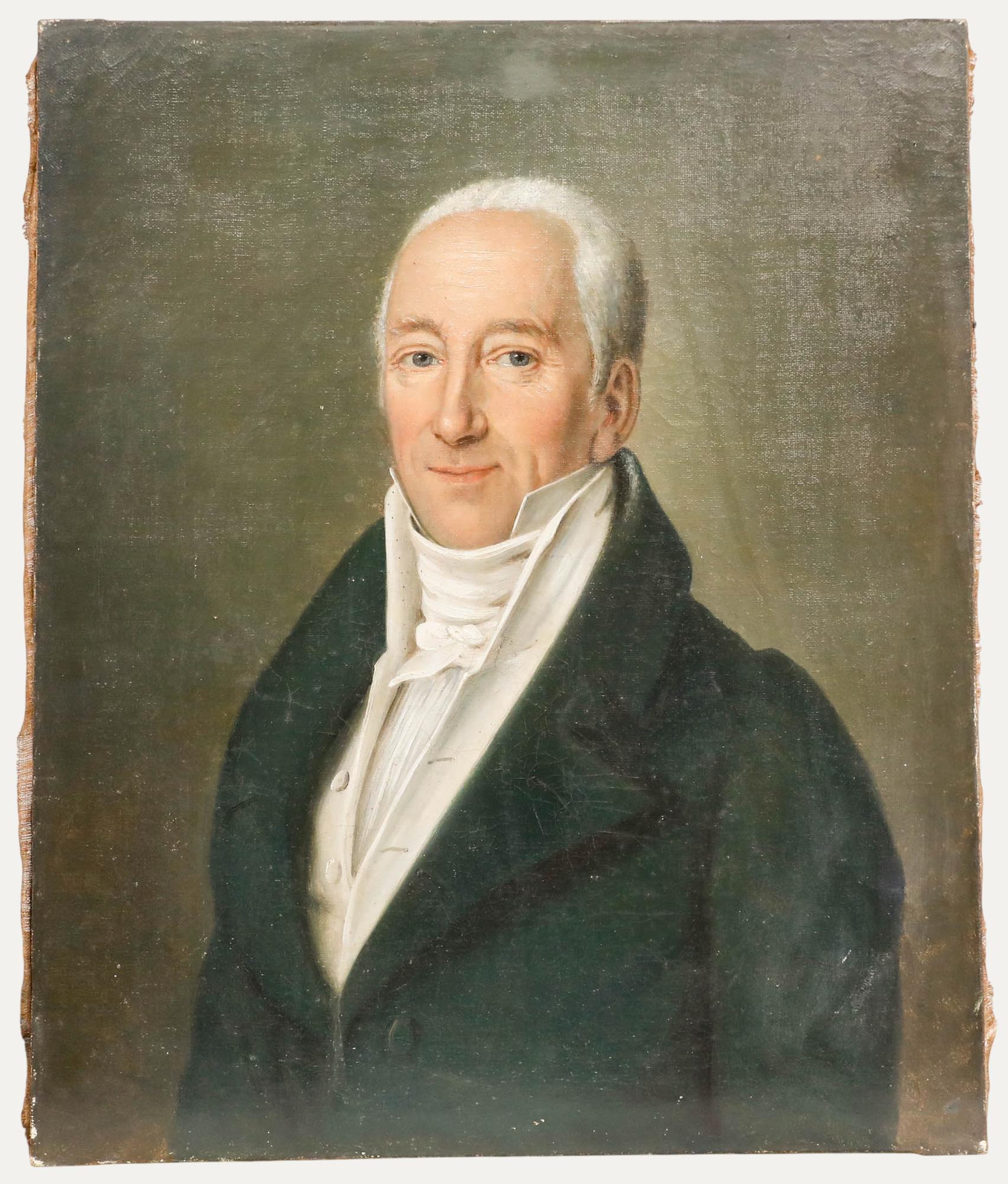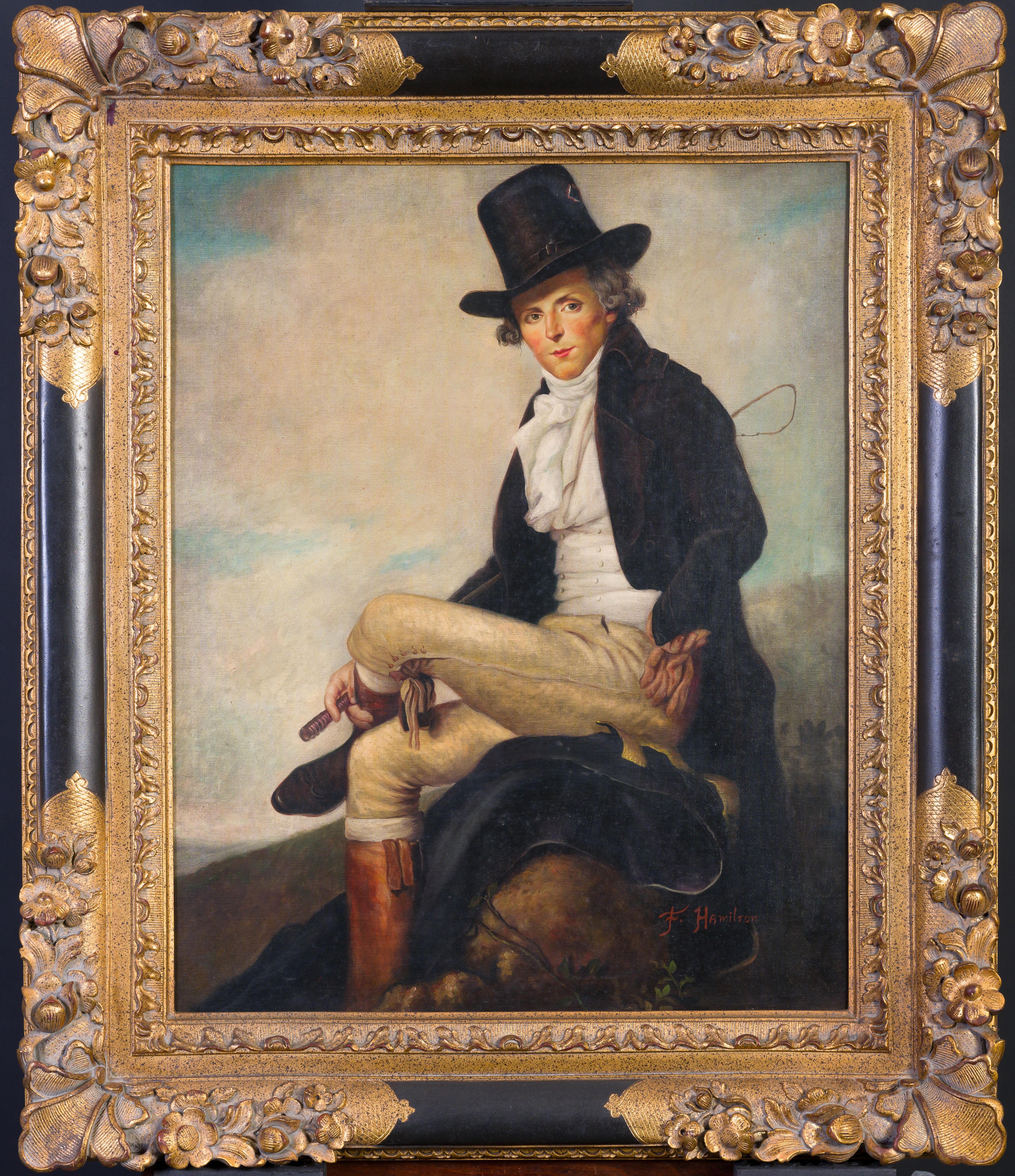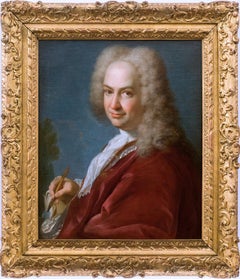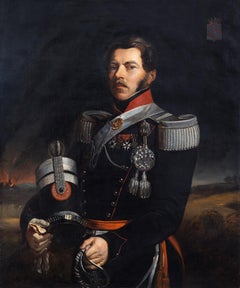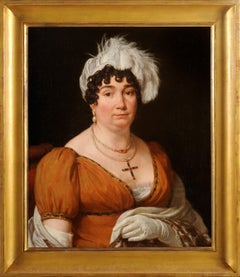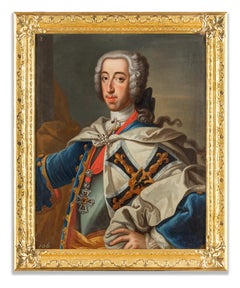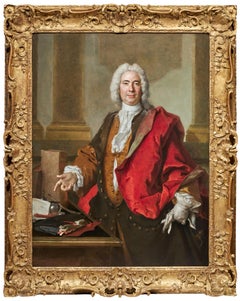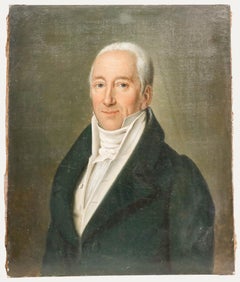Items Similar to Cardinal Mazarin portrait
Want more images or videos?
Request additional images or videos from the seller
1 of 11
UnknownCardinal Mazarin portraitCirca 1645
Circa 1645
$17,950.54
£13,334.25
€15,000
CA$24,764.03
A$27,222.48
CHF 14,306.89
MX$330,580.05
NOK 178,474.82
SEK 169,092.34
DKK 114,187.77
About the Item
French School circa 1645
Portrait of Cardinal Mazarin - Sketch
Oil on canvas
H. 41.5 cm; W. 27 cm
Provenance: Collection of the Reverend Georges Downing Bowles (1789-1863)
Would the Grand Siècle have been so great without the action of this Italian renowned for his political finesse, his outrageous enrichment and his fabulous collection, but whose tenacity, talents as a war leader and unfailing devotion to a State that was not his are often forgotten? In one of the most troubled periods in our history, Giulio Raimondo Mazzarini (Pescina, Abruzzo, 1602– Vincennes, 1661), who became Cardinal Mazarin, was able to restore the power of France against the Habsburgs of Spain and Austria, and defend the throne of the young king whose godfather he was against the machinations of the high aristocracy and the parliaments. Our sketch does not correspond to any of the works known to date representing Mazarin. However, it prefigures an ambitious and, to say the least, solemn portrait. Mazarin, - whose features, although suggested, are easily identifiable -, poses here as a statesman more than a man of the Church. His voluminous scarlet silk cloak (the cappa magna), a billowing flow of fabric bubbling with complex folds, enriched with an ermine hood, redoubles its importance and erects it as a monument to power. Regarding Champaigne's portraits of Richelieu, Bernard Dorival noted that it was extremely rare for a prelate to be depicted standing: the seated position was the dominant convention at the beginning of the 17th century. Our bozzetto adopts the majestic formula used by Champaigne to paint Richelieu full-length. It even reproduces the detail of the cardinal's left hand pulling up his cope to reveal the white of his robe (a detail visible on a preparatory red chalk preserved at the BNF and in the version belonging to the National Gallery). The decoration is of the same type: heavy hangings, columns and balustrade opening onto a garden. However, Champaigne's Richelieu occupies almost entirely the space of his portraits, while our Mazarin is somewhat lost in the height of his palace. On the other hand, while Richelieu holds a barrette, Mazarin, in his right hand, ostentatiously presents a medallion depicting the frail silhouette of a crowned king, that of Louis XIV, called to reign at the age of fourteen. On a console are placed a geographical map, disparate notebooks, - perhaps the famous small notebooks used daily by the cardinal, although they do not resemble those preserved by the BNF -, as well as other miniatures. So many distinctive signs of a strategic minister proclaiming his loyalty to the king, more than of a minister of the faith. We note the presence of an imposing gilded console with a heavy scrolled base. This rich console, combined with the majesty of the pose and the cardinal's purple, serves to stage a power that has reached its zenith. If our bozzetto had resulted in a painting, it would have displayed a far greater pomp than the portraits known today. Mazarin could have had this sumptuous Baroque piece of furniture, which occupies a large space in the composition, imported from Italy. But based on a hunch by Jean-Claude Boyer, another hypothesis presents itself, which would explain the console: could our portrait project not be by an Italian hand, perhaps painted at the request of some member of Mazarin's family, anxious to honor the uncle who had made the fortune of the dynasty? It could, as such, be slightly retrospective. Unless it was a commission interrupted by the cardinal's death. Or perhaps the aborted attempt of a courtier painter anxious to position himself? So many questions, along with that of its attribution, that we will leave open while awaiting new elements. For the moment, we offer a rare testimony on the statesman who allowed the advent of the reign of Louis XIV. An element of provenance is indicated to us thanks to a collection label affixed to the back. This bears the arms of the Reverend Georges Downing Bowles, who died in London in 1863 and who owned a fairly large collection of portraits of illustrious men. Nearly thirty works from this collection were bequeathed by the reverend in 1850 to the Worcestershire Museum. We find there portraits of English and French kings, portraits of philosophers such as Erasmus, etc. Our canvas, considered at the time to be a portrait of Richelieu (as evidenced by the rest of the engraving on the back of the work), has left no trace as to its journey to reach us today.
- Creation Year:Circa 1645
- Dimensions:Height: 16.34 in (41.5 cm)Width: 10.63 in (27 cm)
- Medium:
- Movement & Style:
- Period:1640-1649
- Condition:
- Gallery Location:BELEYMAS, FR
- Reference Number:1stDibs: LU1857216017832
About the Seller
3.0
Vetted Professional Seller
Every seller passes strict standards for authenticity and reliability
Established in 2017
1stDibs seller since 2022
5 sales on 1stDibs
- ShippingRetrieving quote...Shipping from: BELEYMAS, France
- Return Policy
Authenticity Guarantee
In the unlikely event there’s an issue with an item’s authenticity, contact us within 1 year for a full refund. DetailsMoney-Back Guarantee
If your item is not as described, is damaged in transit, or does not arrive, contact us within 7 days for a full refund. Details24-Hour Cancellation
You have a 24-hour grace period in which to reconsider your purchase, with no questions asked.Vetted Professional Sellers
Our world-class sellers must adhere to strict standards for service and quality, maintaining the integrity of our listings.Price-Match Guarantee
If you find that a seller listed the same item for a lower price elsewhere, we’ll match it.Trusted Global Delivery
Our best-in-class carrier network provides specialized shipping options worldwide, including custom delivery.More From This Seller
View AllPortrait of a man in armor
Located in BELEYMAS, FR
Attributed to Jacques DUMONT aka DUMONT LE ROMAIN
(Paris 1701 - 1781)
Presumed portrait of Louis-Joseph de Formanoir (?-1732)
Oil on canvas
H. 91.5 cm; L. 73 cm
Signed on the helmet:...
Category
1750s French School Portrait Paintings
Materials
Canvas, Oil
Presumed artist self-portrait
Located in BELEYMAS, FR
Louis-Gabriel BLANCHET
(Versailles, 1701 – Rome, 1772)
Presumed self-portrait of the artist
Oil on canvas
H. 73 cm; W. 60 cm
Circa 1730
Originally presented in a Restoration period frame with a "Mignard" cartouche, this beautiful painting initially appeared to us as a work from northern Italy. However, it exuded a rather French form of refinement, suggesting that its artist may have assimilated a dual influence from both sides of the Alps.
We thank our colleague and friend Philippe Mendès for spontaneously and judiciously "bringing out" the name of Louis-Gabriel Blanchet, a Romanized French portraitist, whose spirit and stylistic characteristics we clearly recognize here.
Blanchet's "French" years, before his final departure for Rome in 1728, following his winning of the second Grand Prix for painting after Subleyras in 1727, are extremely poorly documented. His father, Gabriel, was valet to Blouin, himself Louis XIV's first valet at the time. According to Thierry Lefrançois, Blanchet was one of the few students of Nicolas Bertin (1667-1736), whose studio he is said to have joined in the early 1720s. At a baptism on March 24, 1724, where he was godfather, he is mentioned as a painter in the picture store of the Duke of Antin, the director of buildings between 1708 and 1736. At this time, he was probably already married to Jeanne Quément, with whom he had a daughter also named Jeanne, who would marry Nicolas Aviet, the son of a valet in the queen's wardrobe, in Versailles in 1738.
When Blanchet arrived in Rome in October 1728, he was accompanied by Subleyras, Trémolières, and Slodtz. He enjoyed the goodwill of Vleughels, the director of the Académie de France, which had been based at the Palazzo Mancini since 1725, even though the latter was not always kind to our resident. From 1732, he was under the protection of the Duke of Saint-Aignan when he took up his post as ambassador to Rome. Along with Slodtz and Subleyras, they formed a trio of friends, joined by Joseph Vernet shortly after his arrival in Rome in 1734. Slodtz and Blanchet, on the occasion of Subleyras's marriage in 1739, were there to attest that their friend was not bound by any marital commitment, and Blanchet was a witness at Vernet's wedding in 1745.
It is most likely from these early years in Rome that our portrait of the artist dates, the expression and turn of his face irresistibly reminiscent of a self-portrait. The still relatively youthful features may correspond to Blanchet's thirty-something years, and the fluffy wig was still fashionable at this time.
The painting fits well with the depiction of a young painter wanting to display both the beginnings of success and a certain simplicity or restraint. A slight smile expresses a form of assurance in this man with a gentle, sincere gaze and a face radiating a keen sense of wit. We find here the air of intimacy present in almost all of Blanchet's portraits, even those from the 1750s and 1760s, as well as an almost complicity with the viewer. The spirit of the painting is quite close to that of the presumed portrait of Bouchardon (painted around 1730) and the portrait of Pannini, painted in 1736, but it possesses a more natural quality, notably thanks to the absence of decorum. Our work exhibits the characteristics of Blanchet's paintings: elegance, luminosity (especially in the whites), vibrant and refined colors (here, the harmony of the garnet of the garment and the slate blue of the background, whose uniformity is tempered by a very sketched landscape and a grove of greenery), light complexions, rather rosy cheekbones, often full lips, and rather tight framing.
According to the Academy's rules, Blanchet's stay should have ended in the spring of 1732, but, for reasons unknown, he remained in the Eternal City until his death, as did his friend Subleyras, with whom he shared accommodation until the late 1730s. The latter regularly called upon him to collaborate on his paintings, such as The Meal at Simon's. Through Saint-Aignan's intervention, Blanchet was employed in the late 1730s by the Stuart princely family, then exiled in Italy. He notably produced copies (now lost) after Liotard of the portraits of Charles Edward and Henry Benedict, the sons of James III Stuart. The latter also commissioned three other portraits (now in the National Portrait Gallery in London), whose more formal character contrasts with the intimate spirit of Blanchet's portraits. Blanchet frequented English painters, such as the landscape painter Richard Wilson, and studied with the Scottish portraitist Katherine Read...
Category
1730s French School Portrait Paintings
Materials
Oil, Canvas
Portrait of baron de Roisin - Gendarmerie general
Located in BELEYMAS, FR
Flemish school of the 19th century
Armorial portrait of Baron Henri de ROISIN (1787-1846)
in the uniform of a general of the gendarmerie (1835)
Oil on canvas
H. 108 cm; W. 90 cm
Bar...
Category
1830s French School Portrait Paintings
Materials
Canvas, Oil
Portrait of Madame Leblond
Located in BELEYMAS, FR
French school circa 1815
Portrait of Madame Leblond
Oil on canvas
H. 66 cm; W. 55 cm
Named on the back
Comparable to the works of painters such as Louis Hersent, our portrait, unsig...
Category
1810s French School Figurative Paintings
Materials
Canvas, Oil
Italian men portrait
By Giovanni Maria delle Piane dit Mulinaretto (Genoa 1670 - Monticelli d´Ongina 1745)
Located in BELEYMAS, FR
Giovanni Maria DELLE PIANE, known as IL MULINARETTO
(Genoa, 1660 – Monticelli d'Ongina, 1745)
Portrait of a man
Oil on oval canvas
H. 108 cm; L. 83 cm
Provenance: Nino Ferrari Colle...
Category
1740s Italian School Portrait Paintings
Materials
Canvas, Oil
Presumed portrait of Marie-Anne de Bourbon
By Nicolas de Largillière
Located in BELEYMAS, FR
Nicolas de LARGILLIERRE
(Paris 1656 – 1746)
Portrait of a woman, presumed to be Marie-Anne de Bourbon, Princess of Conti (1666-1739)
Oil on oval canvas
H. 8...
Category
Early 1700s French School Figurative Paintings
Materials
Canvas, Oil
You May Also Like
Portrait after Franz Josef Winter, Clemens August of Bavaria, Archbishop Cologne
Located in Greven, DE
Clemens August Ferdinand Maria Hyazinth, Duke of Bavaria (* August 16, 1700 in Brussels; † February 6, 1761 in Koblenz) was as Clemens August I from 1723 to 1761 Archbishop of Cologne and thus at the same time Elector of the Holy Roman Empire, sovereign of the associated archdiocese as well as the tributary lands of Recklinghausen and Westphalia. In addition, he was Legatus natus of the Holy Apostolic See in Rome and Archchancellor of Imperial Italy. Furthermore, he combined the offices of Grand Master of the Teutonic Order...
Category
18th Century Rococo Portrait Paintings
Materials
Canvas
Portrait of Monsieur Aubert, a ceremonial portrait by Nicolas de Largillière
By Nicolas de Largillière
Located in PARIS, FR
Provenance :
Arnold S. Kirkeby (1901-1962)
Donated by Arnold S. Kirkeby to the Los Angeles County Museum of Art in 1955, where it remained until its sale at Sotheby's, New York on January 10, 1991, lot 82.
Christie's, London, July 7, 2010, lot 186, where it was purchased after the sale by the executors of the will of the late Edmund de Rothschild (1916-2009) for display at Exbury House
The Trustees of Exbury House
Literature :
R. Brown, Bulletin of the Art Division, Los Angeles County Museum, VIII, 1957, pp.8-9, no. 4;
S. Schaefer and P. Husco, European Paintings and Sculpture in the Los Angeles County Museum of Art (Los Angeles, 1987), p. 53 (illustrated and dated c. 1735)
This sumptuous ceremonial portrait, executed around 1725-1730, depicts Monsieur Aubert, the French General Comptroller of Bridges and Roadways, as we learn from a letter on the desk beside our model. The virtuoso treatment of the fabrics, the authoritative yet confident pose, the vigorous treatment of the two hands, are representative of Largillière's talent, here at the peak of his art as portraitist.
The portrait also has a rather extraordinary provenance: donated by Arnold S. Kirkeby, an American hotel magnate and real estate developer, it was exhibited during almost forty years in the collections of the Los Angeles County Museum, before being acquired in 2010 by the executors of Edmund de Rothschild's will to adorn his former home Exbury House (Hampshire), where it remained until its sale in 2022.
1. Nicolas de Largillière, a great European portraitist
Nicolas de Largillière (or Largillierre), one of Europe's premier painters of portraits, history paintings, and still lifes during the late seventeenth century and the first four decades of the eighteenth, was born in Paris in 1656. He was the son of a hatmaker and merchant who moved with his family to Antwerp in 1659. As a boy of nine, he traveled for the first time to London in the company of an associate of his father. After returning to Antwerp more than a year later, his artistic gifts were recognized and his father apprenticed him to Antoni Goubau (1616-1698), a painter genre scenes and landscapes. Something of a prodigy, he was admitted to the painters' Guild of Saint Luke when he was only seventeen. In 1675 he made a second trip to London, where he was employed at Windsor Castle and worked as a restorer under the direction of Italian painter and decorator Antonio Verrio (c. 1639-1707), who brought him to the attention of King Charles II (r. 1660-1685).
At this time Largillière painted several still life paintings in the manner of the Dutch and Flemish masters. Thereafter he practiced this branch of painting with consummate skill, a talent that allowed him to make brilliant use of flowers, fruit, and animals in some of his most ambitious portraits and contemporary history pictures.
In 1679 Largillière settled in Paris, where he specialized in baroque portraiture in the grand manner of Peter Paul Rubens (1577-1640), Anthony van Dyck (1599-1641), and Peter Lely (1618-1680). The Flemish battle painter Adam Frans van der Meulen (1631 or 1632-1690) introduced him to Charles Le Brun (1619-1690) who, as First Painter to King Louis XIV (r. 1643-1715) and director of the Académie royale de peinture et de sculpture, was the predominant figure in France's official art establishment. Upon his acceptance as a candidate for admission to the Académie, he agreed to execute as his diploma picture a large portrait of Le Brun (completed 1686, Paris, Musée du Louvre, eight photo in the gallery) seated in his studio surrounded by the accoutrements of his art and an oil study for the ceiling of Galerie des Glaces at Versailles.
In 1686, Largillière made a final trip to England, where he painted portraits of the newly crowned king, James II (r. 1685-1688) (Greenwich, National Maritime Museum) and his consort Mary of Modena...
Category
1720s Old Masters Portrait Paintings
Materials
Oil
Portrait of Colonel Charles-Louis-Prosper Marquis de Chérisey (1786-1837)
Located in Paris, IDF
After Louis-Stanislas MARIN-LAVIGNE (Paris, 1797 – Paris, 1860)
Portrait of Colonel Charles-Louis-Prosper Marquis de Chérisey (1786-1837)
in the uniform of commander of the 38th lin...
Category
Mid-19th Century French School Portrait Paintings
Materials
Oil
Fine 19th Century Oil - Portrait of Louis Lesourd
Located in Corsham, GB
This formal portrait depicts a smartly dressed gentleman with a gentle, welcoming smile. A French inscription to the reverse identifies the sitter as Louis Lesourd, born 1762. Unsign...
Category
19th Century Portrait Paintings
Materials
Oil
Portrait of Pierre Seriziat
Located in Douglas, Isle of Man
Copy of a Portrait of Pierre Seriziat by Jacques Louis David which was painted in 1795 , David 1748-1825, this picture is a direct copy by an artist by the name of F. Hamilton. There...
Category
Late 20th Century Portrait Paintings
Materials
Canvas, Oil, C Print
A Portrait of a Gentleman, thought to be Moses Diego Lopez Pereira
Located in London, GB
Austrian School, 18th Century
A Portrait of a Gentleman, thought to be Moses Diego Lopez Pereira, 1st Baron d’Aguilar, in an elaborate coat and a powdered wig
Oil on canvas
Provena...
Category
18th Century Paintings
Materials
Canvas, Oil
More Ways To Browse
Antique Advent
Antique Cope
Bret Reilly
British Officer Painting
Caspar Netscher
Charles Andre Van Loo
Duke Of Somerset
Edward Masters Painting
French Painter Bernard
John Hicks
Lillian Shao
Marjorie Blake
Moretti Lucien
Oil Painting Of Turkey
Oil Painting Peasant Girl
Portrait Of Cleric
Portrait Painting 1700s
Steve Mcqueen Pop Art
